Jack Kutilek / Games
I host many of these games on my itch.io page: jackkutilek.itch.io
Magician's Cat
2022
link to gameA small jumping puzzle about a cat causing trouble. Make your way into the box in the top right corner. Click to move.
My single-screen entry to the second Thinky Puzzle Game Jam. I was interested to leverage the simplicity of mouse input to balance out a complex jumping logic. I like how it turned out for the most part, good for a jam game. For a while I struggled to find a way to frame it as a puzzle, but eventually lucked into the leveling-up idea. It ended up fitting into the cat theme really well.
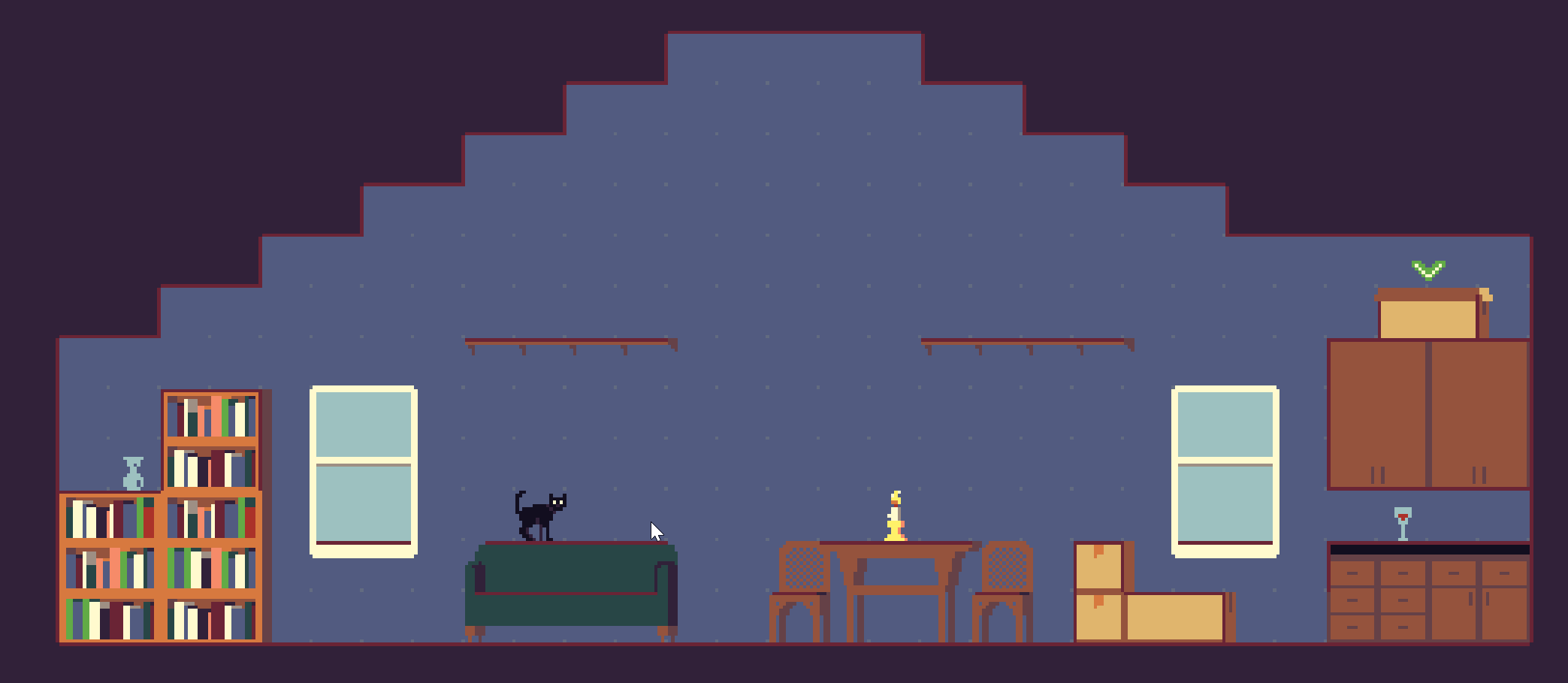
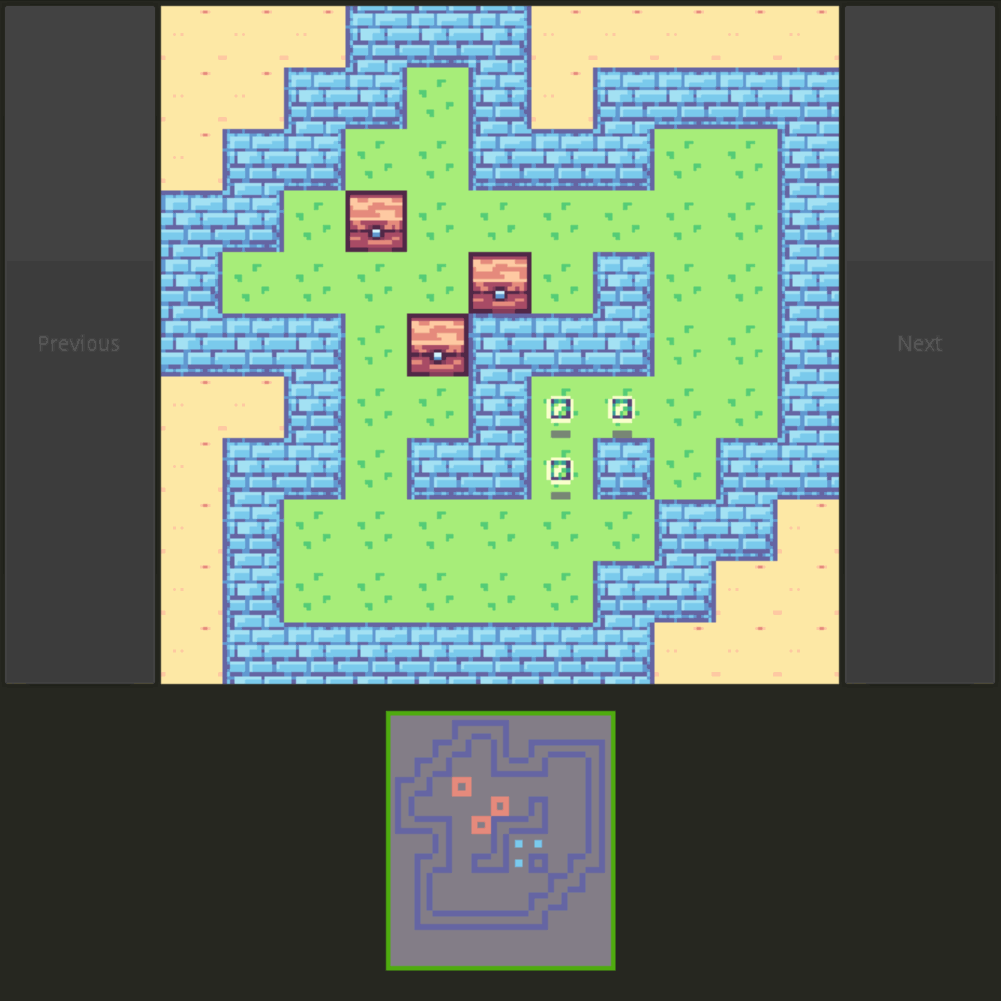
Jack's Sokoban
2022
link to gameAn implementation of Sokoban with no pusher. Use the mouse to drag the boxes to the targets, making sure to keep the grass alive while you do. The game also keeps track of your moves in a timeline, which you can edit after the fact for more precision solving.
I like the feel of games like Rush Hour, both the physical and conceptual feel of dragging blocks around directly. I realized I could create an interface to Sokoban with the same qualities, and put together this prototype. It worked great, but needed a bit of streamlining. I implemented it in Godot and refined the interface - even better. Solving puzzles in sokoban had never been so effortless; I found it easy to enjoy puzzles that had overwhelmed me in the past. I want to play all sokoban-likes like this. One day, I will re-create some in this implementation.
I started adding more features to make it even easier to play: note-taking tools, predictive tools (which I ended up cutting), move sequence editing, and more. I have a long-standing dream of facilitating a fully deductive play-style for Sokoban. I was able to realize a lot of ideas from that dream in this project, but there are still plenty others that could be included - such as working backwards from the solution, and more sophisticated move sequence management and editing (to better facilitate entering moves out of order, as they are deduced).
There are lots of exciting places this project can go, but it needs some time to simmer before I get back into it.
Conway's Game of Sokoban
2022
link to gameWander through the wild world of Conway's Game of Life, with your trusty Sokoban blocks and targets.
This started as a sketch that I made three years beforehand - I thought it was fun but maybe a bit too silly. It grew on me over time, and I decided to polish it up, and then ended up adding some more levels to it. It's a fun way to spend a bit of time with some of the creatures you can find in the Game of Life, to get up close and personal with them :)
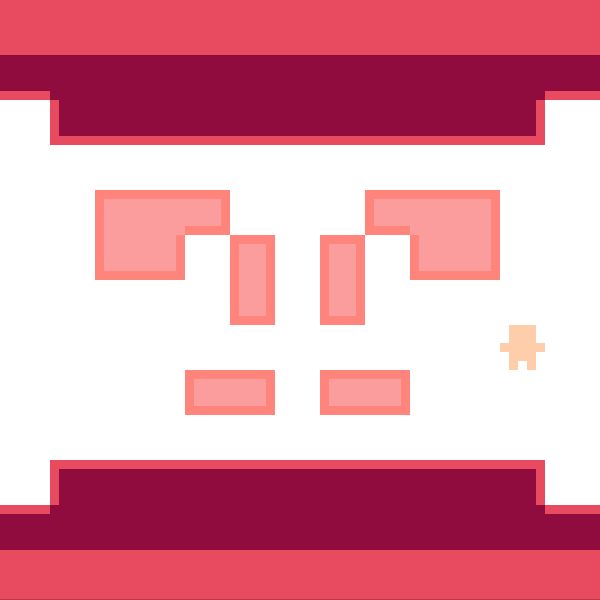
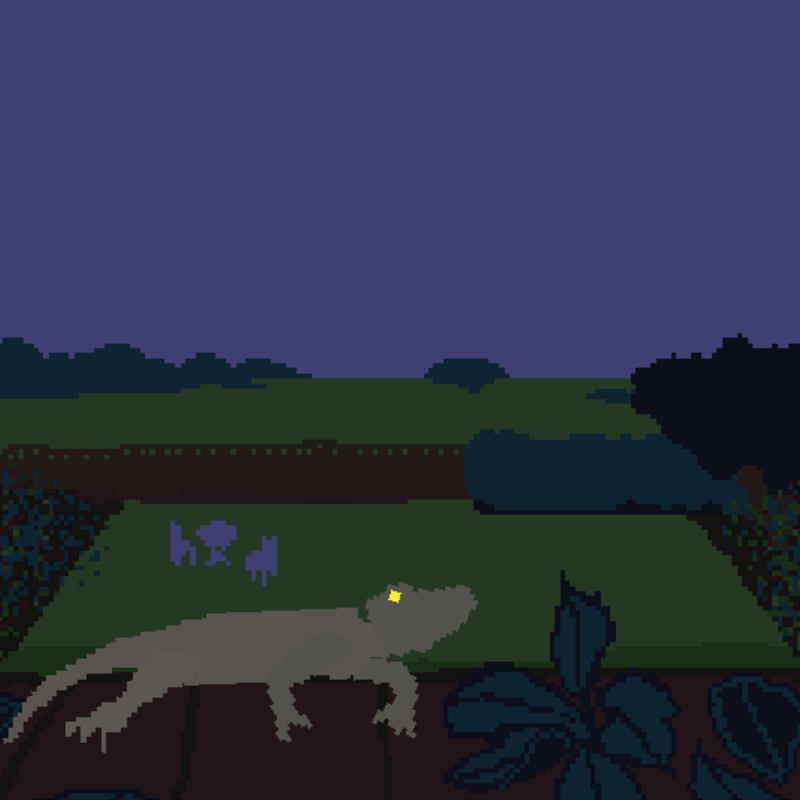
Lizard
2021
link to gameUse mouse to do pushups and make the world go 'round!
Also originally made for the Paradise Train Jam, and continuing the approach to Haiku Games started with Sun Hands, this is the second of what I hope will be a series of tiny games about the sun. It was fun to rig this lizard for animation. I like that the sun/moon is attached to a pendulum-like physics system - it provides some physical play to go alongside the poetic play of the game's theming.
Sun Hands
2021
link to gameUse your mouse to find your friend and say hi!
Originally made for the Paradise Train Jam, this is another attempt at realizing my 'Haiku Games' idea. This is the first of what I hope will be a series of tiny games about the sun. I like how chunky the graphics are, how simple the puzzle is, and how much movement there is while you explore the game. It came together quickly, and helped me get started using Godot.
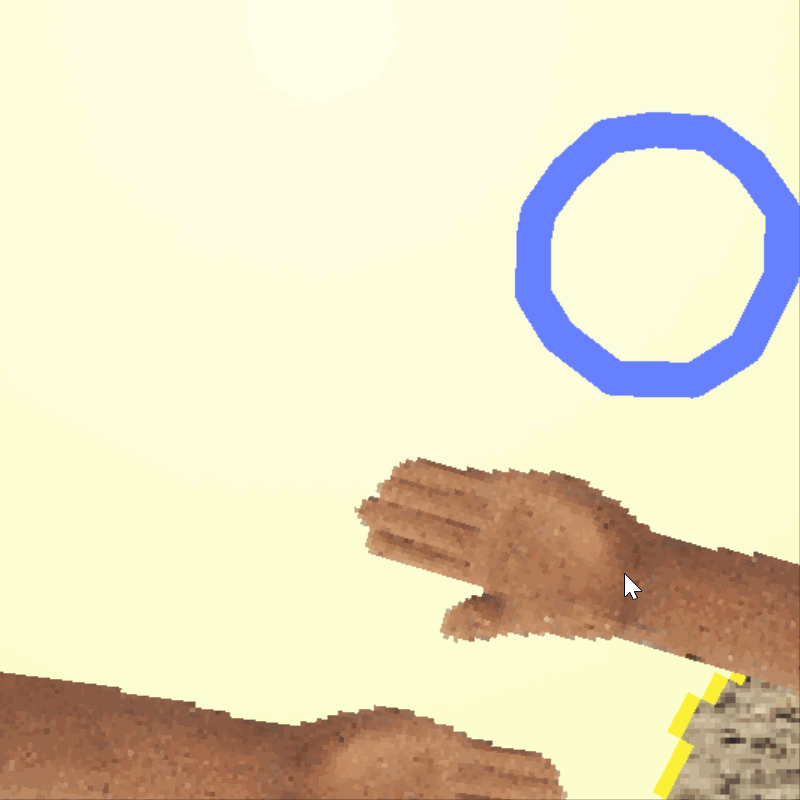
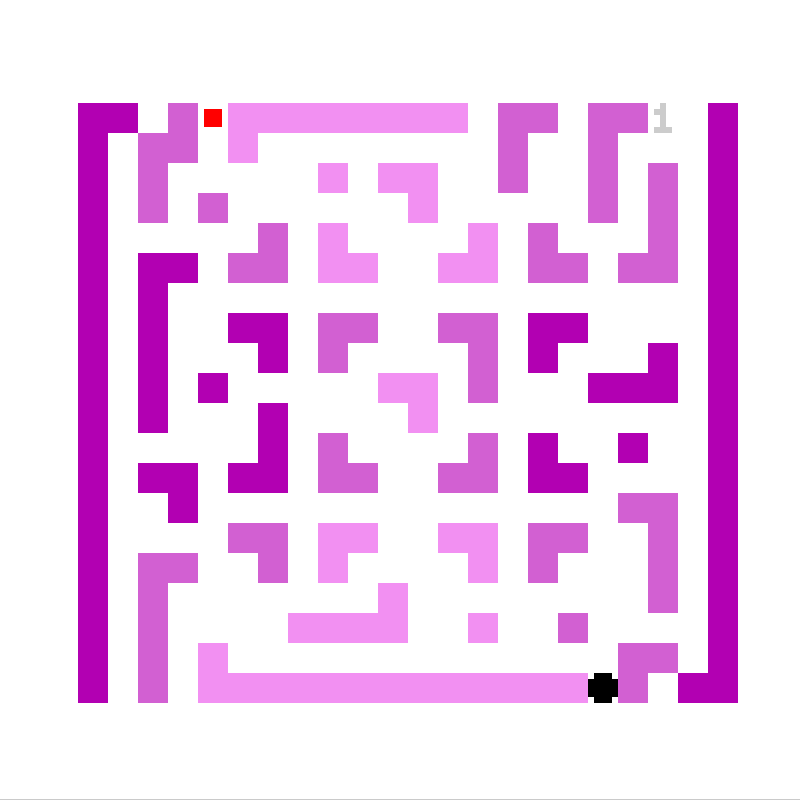
No Left Turn Mazes
2021
link to gameStandard, classic, grid mazes - but you can't turn left or go backwards. A puzzlescript remake of Clickmaze's implementation of the game, with my own level designs.
I really enjoyed developing different logical and visual motifs for these levels. I like to think of all state-based puzzles (like Sokoban) as mazes through abstract state-spaces - but importantly, mazes where logic can help you decide which turns to make without tracing through the available paths beforehand. Starting from classic mazes, No Left Turn Mazes is one of the smallest steps you can take in this direction, and it's fascinating how much intrigue you can get from such a simple extension of the rules. It is easy to watch yourself trace out the walls in the abstract state-space mazes defined by the levels.
Boogie Woogie
2020
link to gameA puzzle game about blocks that move. Reds follow you, and Blues push you. 36 levels.
I had a lot of fun making levels for this; they just kept falling out of the mechanics (originally I also had Green blocks, but Reds and Blues turned out to be interesting enough). I enjoyed sculpting level shapes and symmetries from the core puzzle ideas. I spent a lot of time pushing the graphics of puzzlescript as well, and I like how it came out - it catches the eye and helps communicate the game systems. In particular, the way that the blocks float - and the delayed gratification that goes with it - is a fun bit of design play.
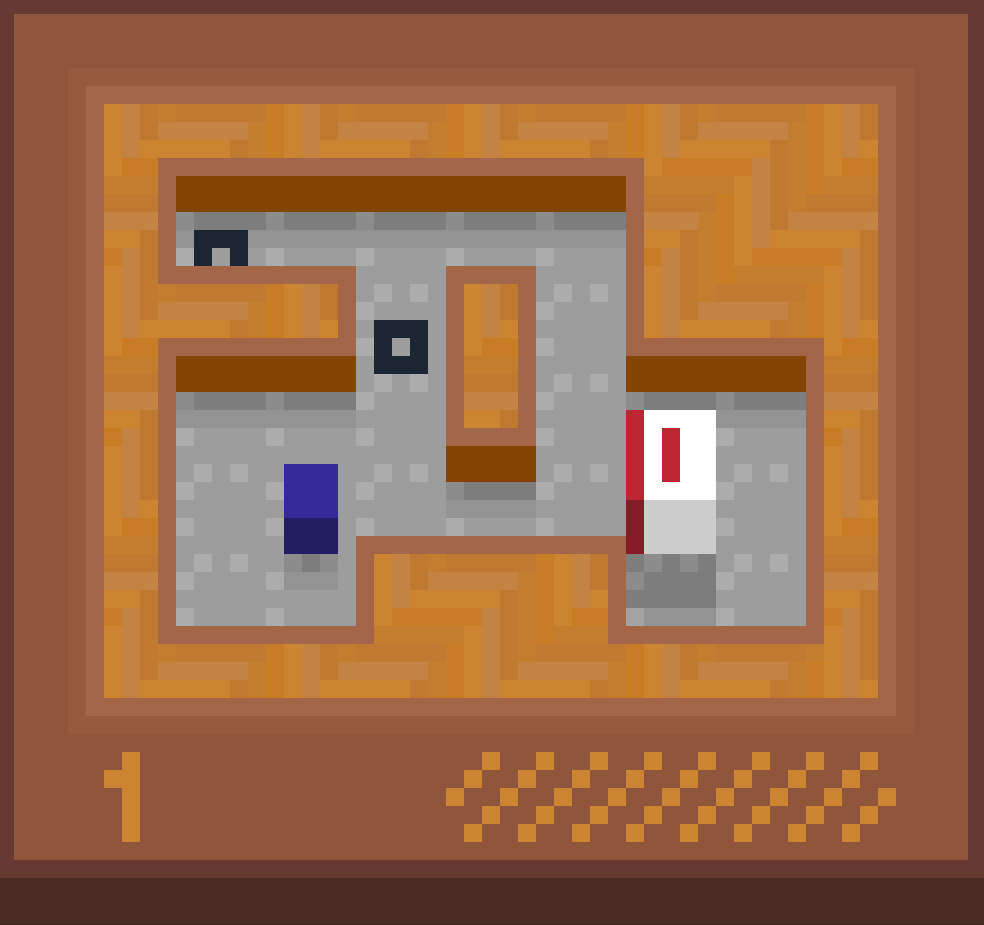
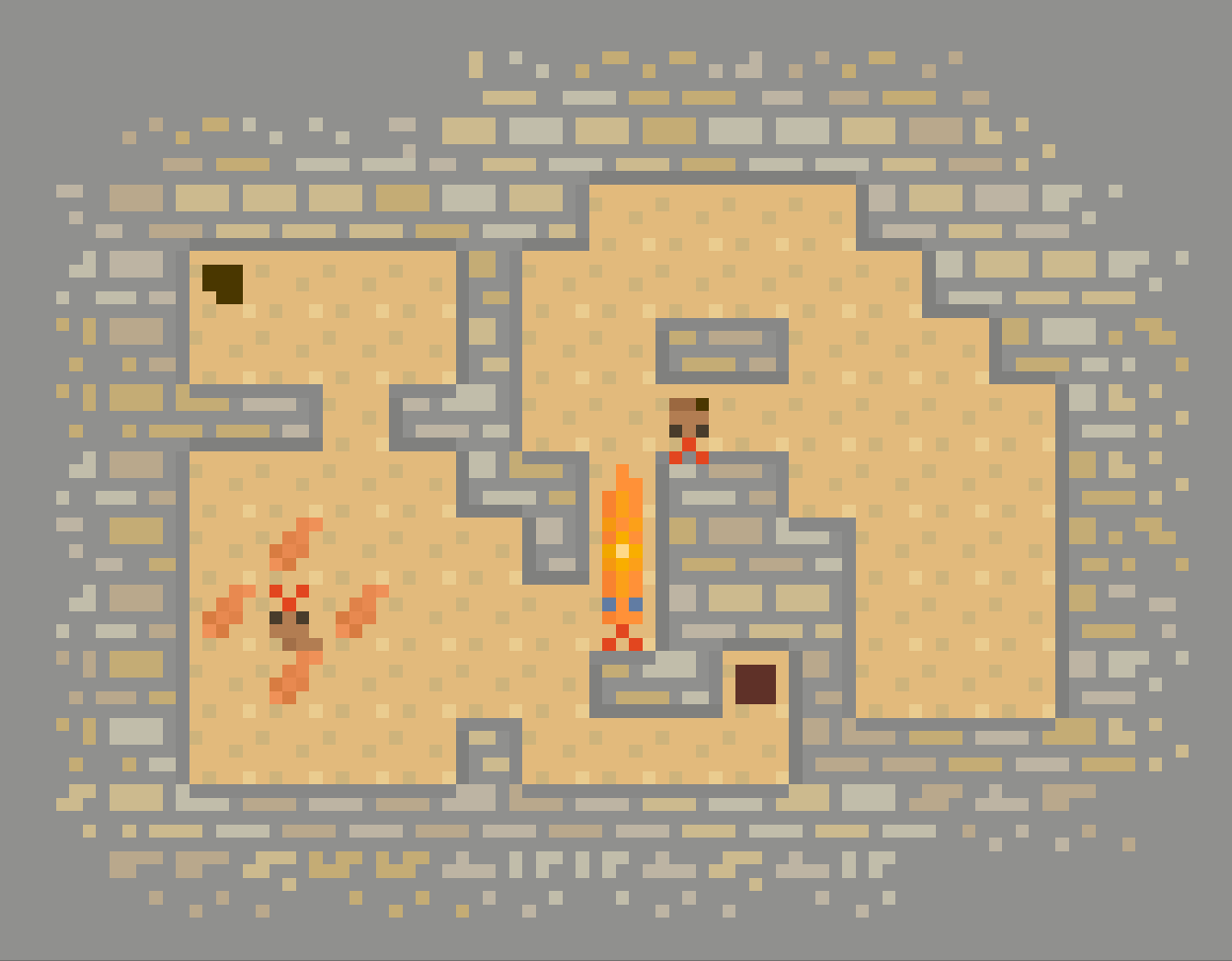
Snakehole
2019
link to gameA puzzle game about snakes. Help the little snakes get to their little holes, then get to your own hole. Don't let any lizards get away!
I like how the player and the crates have symmetric mechanics - they are both snakes that grow longer when they eat and need to end in a hole! Inspired by Every Frame a Painting's video on 'F for Fake', I carefully organized the puzzle ideas I came up with, and ended up combining related ideas into single puzzles, which gave them a nice weight and cohesive, alternating themes. It's only 8 levels, and on the difficult side, but I'm proud of the density and consistency of intrigue I managed to string together in the game.
Crate Cables
2019
link to gameA short puzzle game where you construct cables from crates to connect nodes together. About 20 levels in all.
The mechanics in this game are kind of strange, and so was the process of designing the puzzles. I like what I was able to wring from the mechanics, though, and I feel like I continued to learn a lot about puzzlescript in this project.
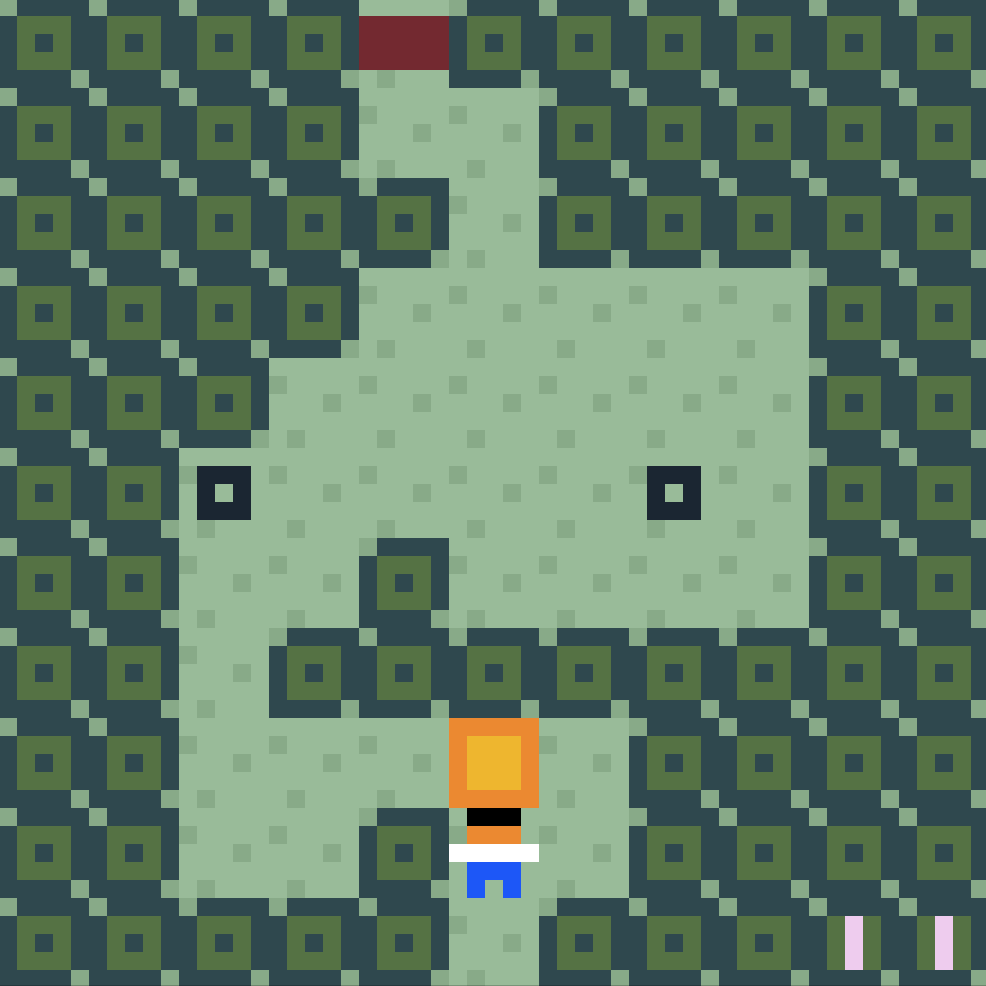

Movement Garden
2018
link to gameA small puzzlescript game where you have to sacrifice movement in a direction to make progress. Originally made for Ludum Dare 43 (theme: sacrifices must me made), then updated with some improvements and new levels afterwards.
This was my first original puzzle game that felt successfully realized. The puzzle designs felt very natural, which made them a lot of fun to work on. Also, without saying too much, I really like some of the tricks the game manages to pull off.
Jack no Puzzle . . . .
2018
link to game10 custom-made Jelly no Puzzle levels, a second exercise in puzzle design.
This time I gave myself the constraint of having only four horizontally alternating red/blue/red/blue jellies at the start of a level (with arbitrary black jellies allowed), to see how much variety I could squeeze from the basic premise of "get the jellies out of each others' way". It was an illuminating exercise, and I think it resulted in some nice, simple jelly puzzles.
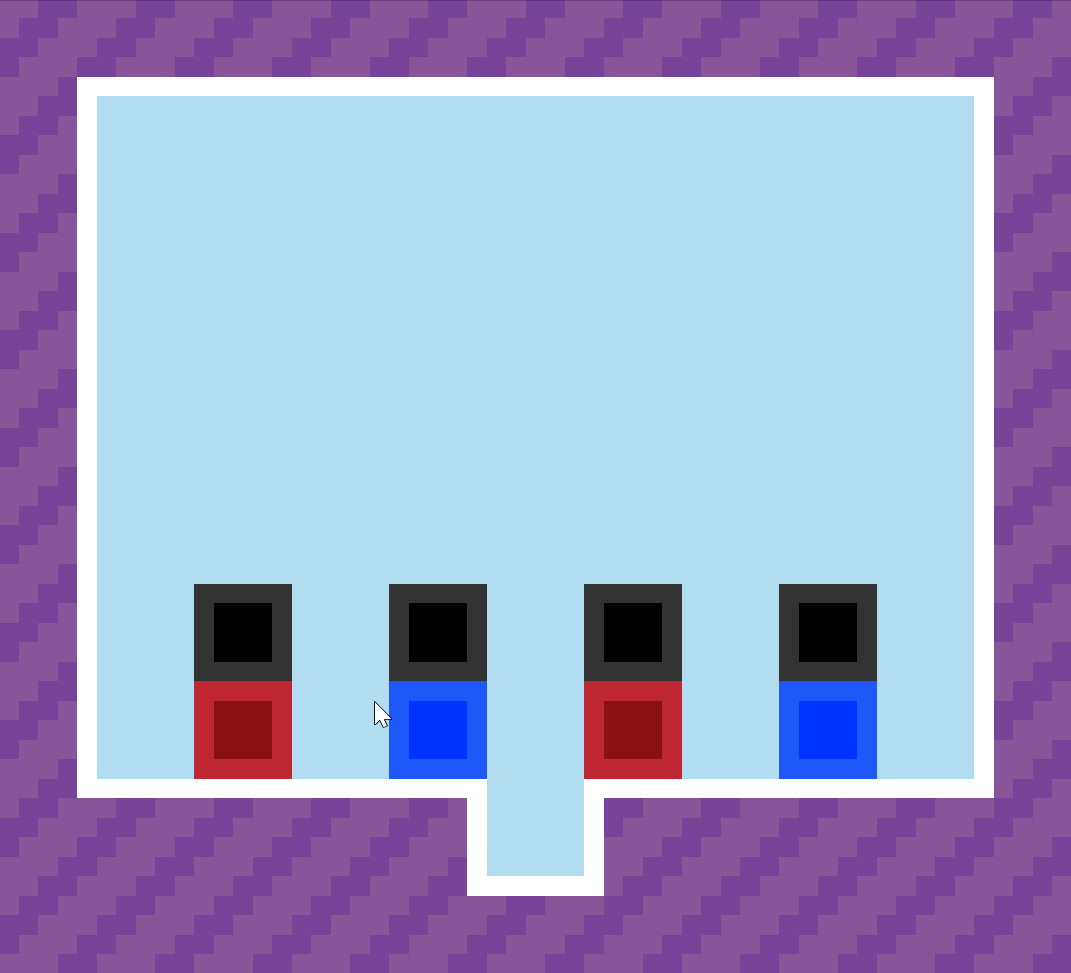
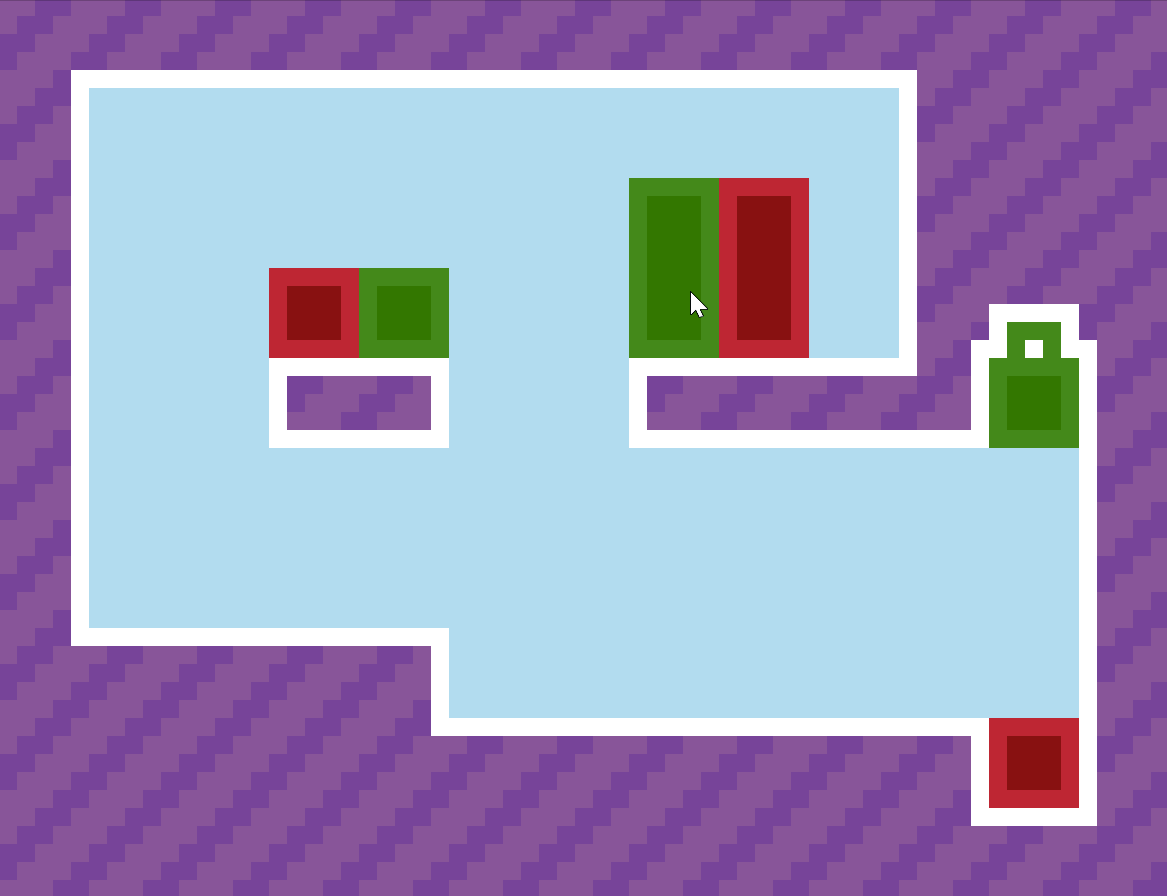
Jack no Puzzle
2018
link to game10 custom-made Jelly no Puzzle levels, an exercise in puzzle design.
These are some of the first puzzles I made where I felt like I had some idea of what I was doing, though I still had plenty of questions and relied a lot on 'accidental design'. I focused on creating variety in the puzzles, and didn't worry about teaching any logical devices along the way - I assumed players had already played the original game.
Jelly no Puzzle (demake)
2018
link to gameA puzzlescript demake of Qrostar's incredible Jelly no Puzzle, shared here with Qrostar's blessing. Supports mouse and keyboard input, and contains the 40 levels of the free Windows version, along with three bonus levels.
I made this soon after thoroughly enjoying the full Android version of Jelly no Puzzle. When it was still hard for me to think in plain Sokoban space, it was easy for me to think in Jelly no Puzzle space. This project was a way to develop more proficiency with puzzlescript, and to create a level editor for Jelly no Puzzle in which I could practice designing puzzles myself. It has also become an easy way for some Mac users to experience the wonders of this special game, which has been a nice bonus.
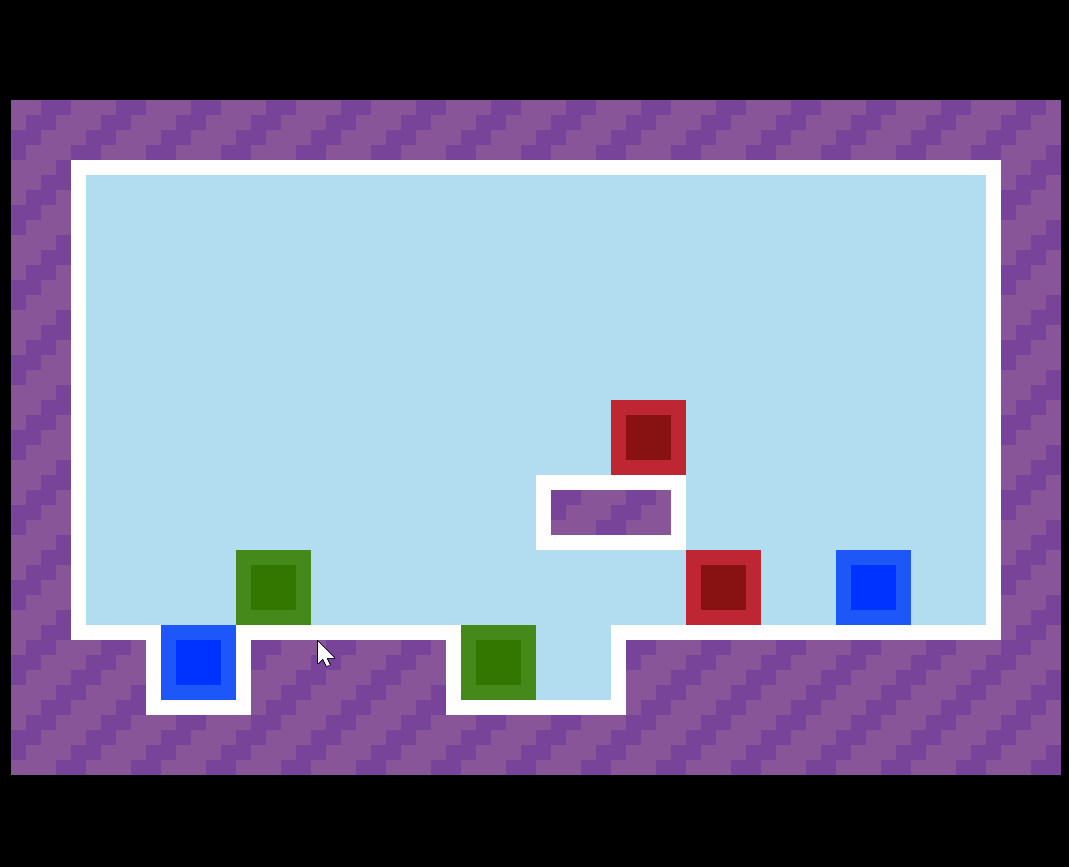
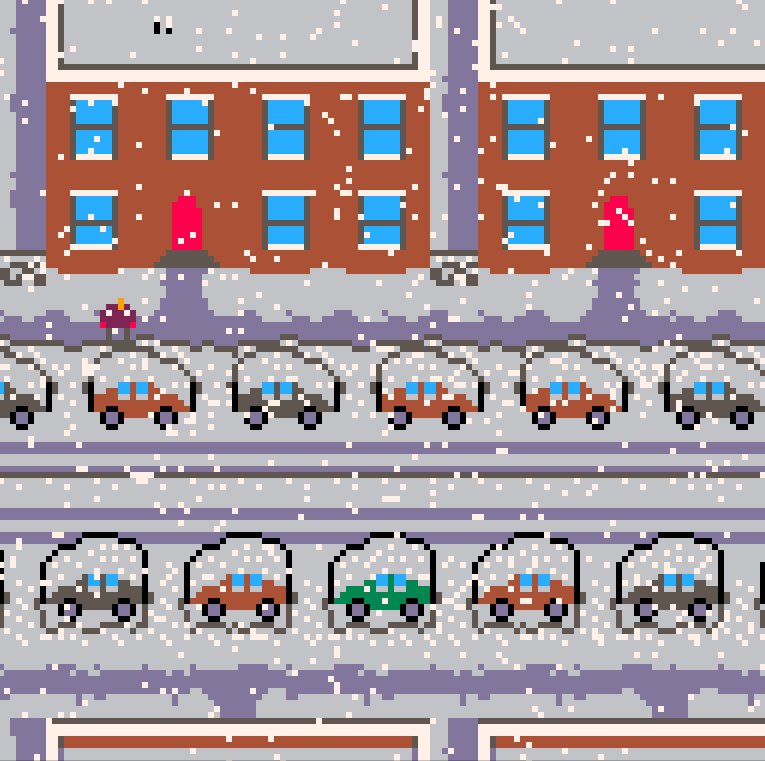
Snow Cars
2018
link to gameA haiku by Cor van den Heuvel, interpreted as a game (made in Pico-8).
Three screens, for three lines. I think the simplicity and spirit of the original haiku comes through this translation more or less successfully. I've spent a lot of time thinking about 'haiku games', both before and after making this game. Despite its various flaws, the humble ambitions of this formulation of the idea continue to hold strong in my mind -- there is some magic here I still haven't fully wrapped my head around.
Little Groups
2016
link to gamePush around the elements of the little dihedral groups and discover how they interact with each other.
My first game in puzzlescript, and my first game in general. I've always liked the power of games to create spaces that you can inhabit, and internalize. I started making games with the hope of realizing interesting mathematical spaces (like the algebras of groups, and strange geometries and topologies), and this was one of my first attempts that had some amount of success.
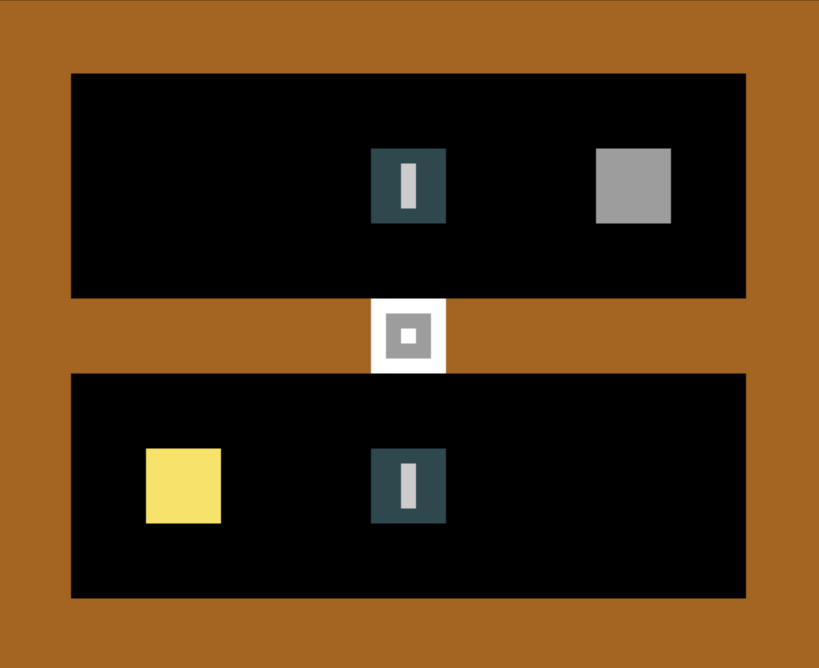
Sketches
Bird Game
2021
link to gameA prototype of a time-stepped movement system with gravity. For a game about learning to fly - taking a leap of faith.
Evolving my grid-based platforming model further, I attempted to incorporate a discrete model of momentum. I like how the sprite animations communicate this internal state, and the way that the bird walks (or runs) in place between time-steps. Ideally I would extend this to replace the overlay graphics I implemented, but such are prototypes.
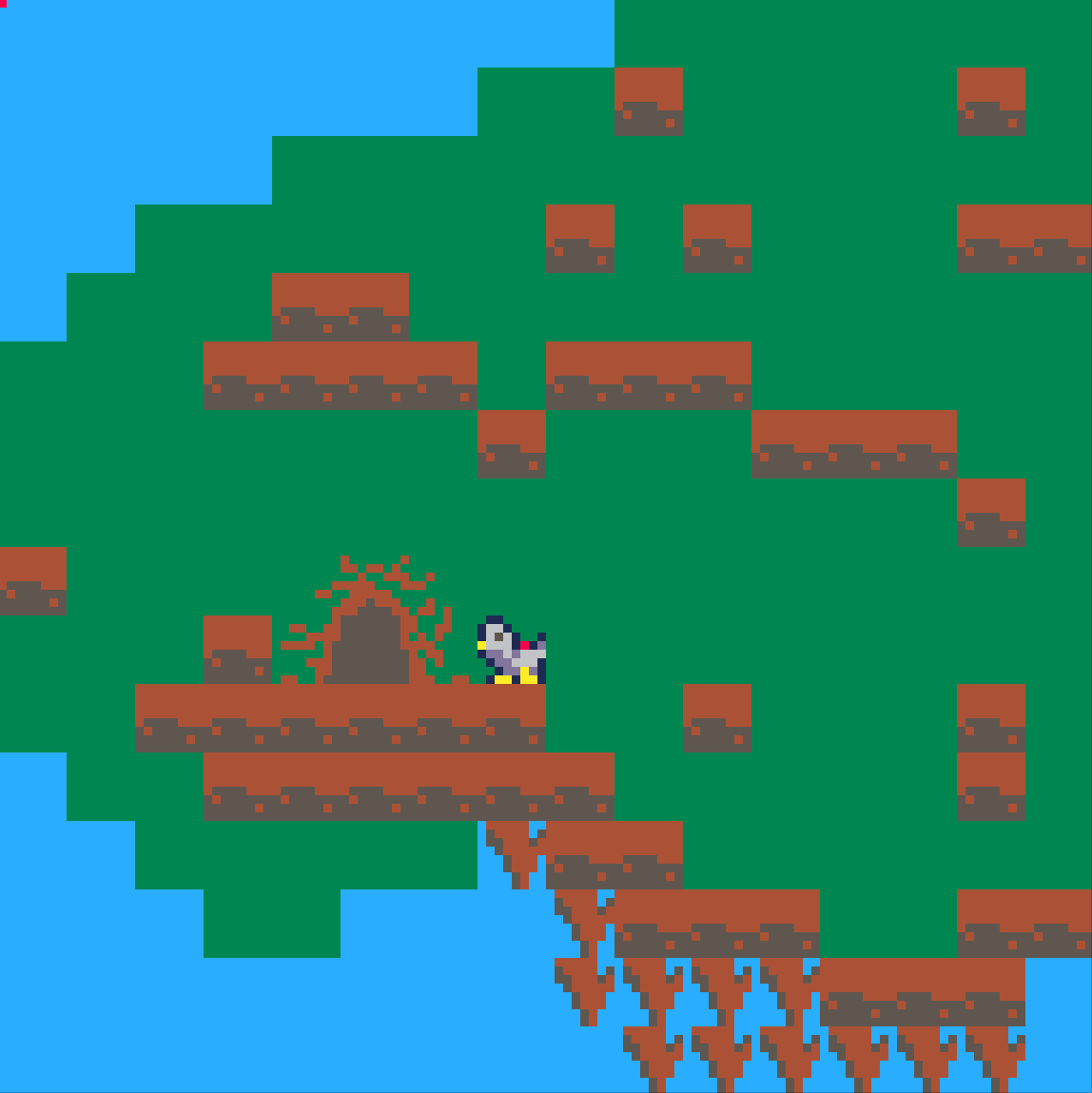
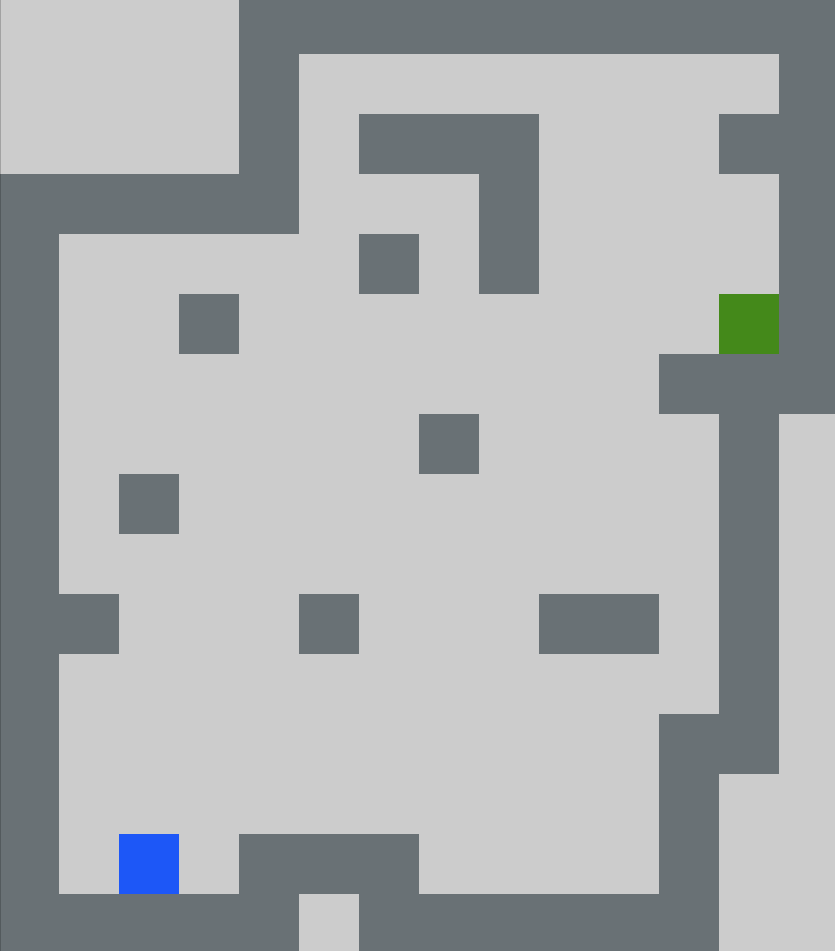
Grid Platformer
2020
link to gameA grid-based platforming mechanic with a single example level.
I put this together as a possible seed game for the third iteration of the Thinky Collective's collaborative puzzle game series. I enjoy the time-stepped nature of sokoban-likes, and am increasingly interested in movement as a core game (and puzzle) mechanic. I like the simplicity of this translation of platforming movement into the puzzle grid, and how many little ideas could fit into this example puzzle. But it was really too complex for a seed game, and a simpler version became the single seed for the two games: Ahoist Cratey and Indiana Hat and the Temple of Puzz.
Gingham
2020
link to gameA sokoban-like exploring a constrained movement system: move two tiles at a time, when you can.
I've always been interested in the kinds of feedback games provide, particularly visual feedback. I really struggle to develop an intuitive control of this game's state-space, and so I introduced a series of visual cues I thought might help me with that: the gingham pattern to help see your grid parity, the red markers on walls and blocks to show when you can interact with them. They helped, but not enough for my taste. I moved on to other design problems, in other game ideas.
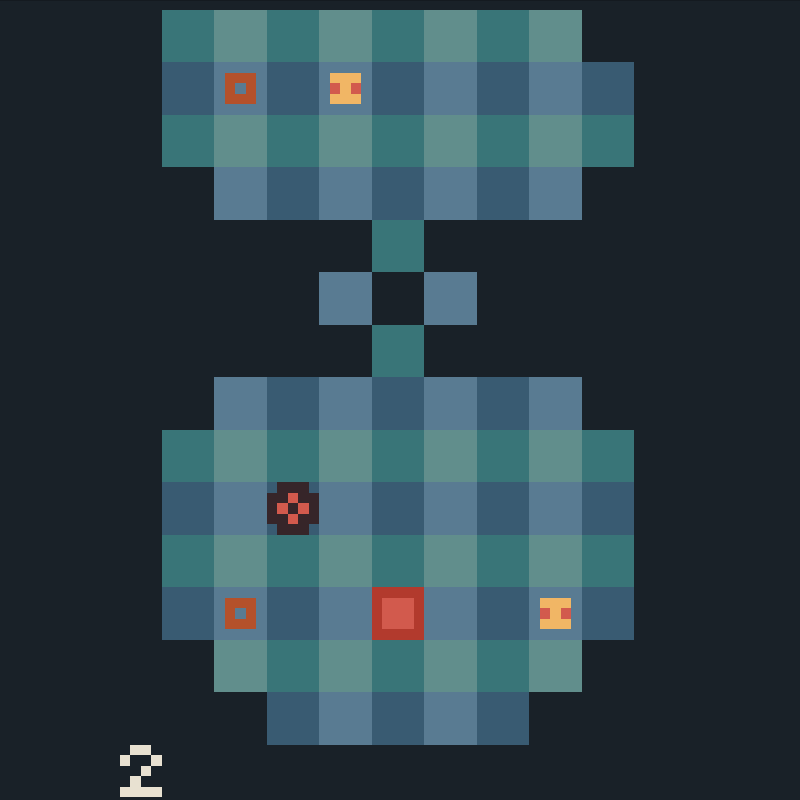
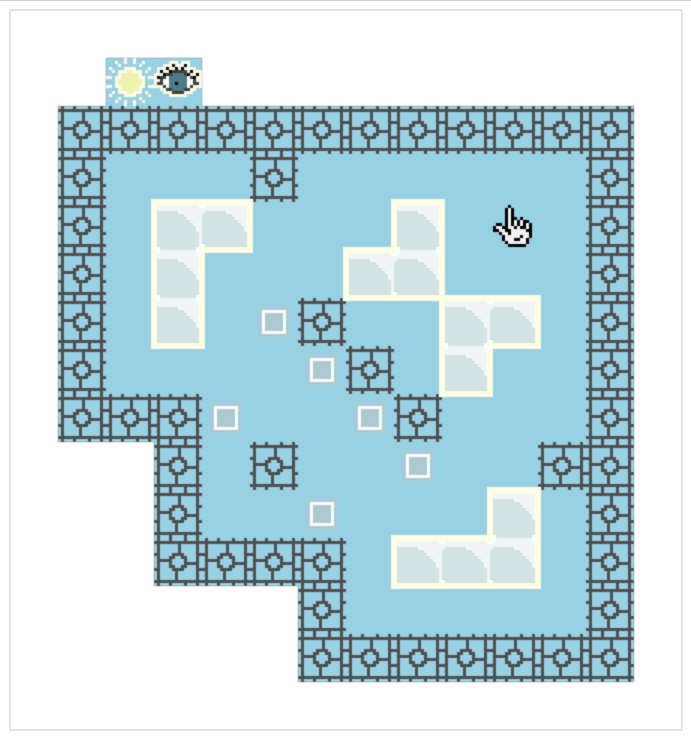
Weather Game
2019
link to gameA block-pushing game with free movement, a light-based mechanic, and dreams of making the leap into the 'real world'.
I had been lamenting how contrived the thematic worlds of puzzle games often were, and wanted to find a way to imbue them with some poetry, something I could take with me after I was done playing. I thought I could develop a rule system in a sokoban-like, allow the player to internalized it, and then map it to a more relatable, less contrived situation and create some magic. Additionally, I wanted to further refine the free movement system from Ghost Game.
But the mechanics became complex and demanded a lot of puzzles, and since they were in service of this goal and rarely given a life of their own, the puzzles became, oops, contrived and over-wrought. I had overlooked the poetry already inherent in puzzles, and neither the puzzles nor the 'real world' poetry came up successful. Still, I like the sprites, the animated movement system, and even a handful of the puzzles. Lessons for future projects.
Ghost Game [Symmetry]
2019
link to gameYou are a ghost and can move through walls. Explore the world of different materials and solve puzzles to retrieve the 4 blocks.
The goal of this game was that the puzzles would exhibit most of the rules, but not all. The rules would be part of a symmetric system, and a final puzzle would involve completing the symmetry: assuming and utilizing a mechanic you couldn't otherwise know about. I really like this symmetry conceit, but I never managed to even draft a design of that final puzzle. I also like the way the ghost player can go anywhere - it's a nice evolution of Sokoban: Cursor with even fewer restriction on player agency. In the end, I got bogged down in the puzzle and mechanic design in this project - aimless without that final symmetric aha, and perhaps struggling to create a mechanical balance against the freedom of the movement system.
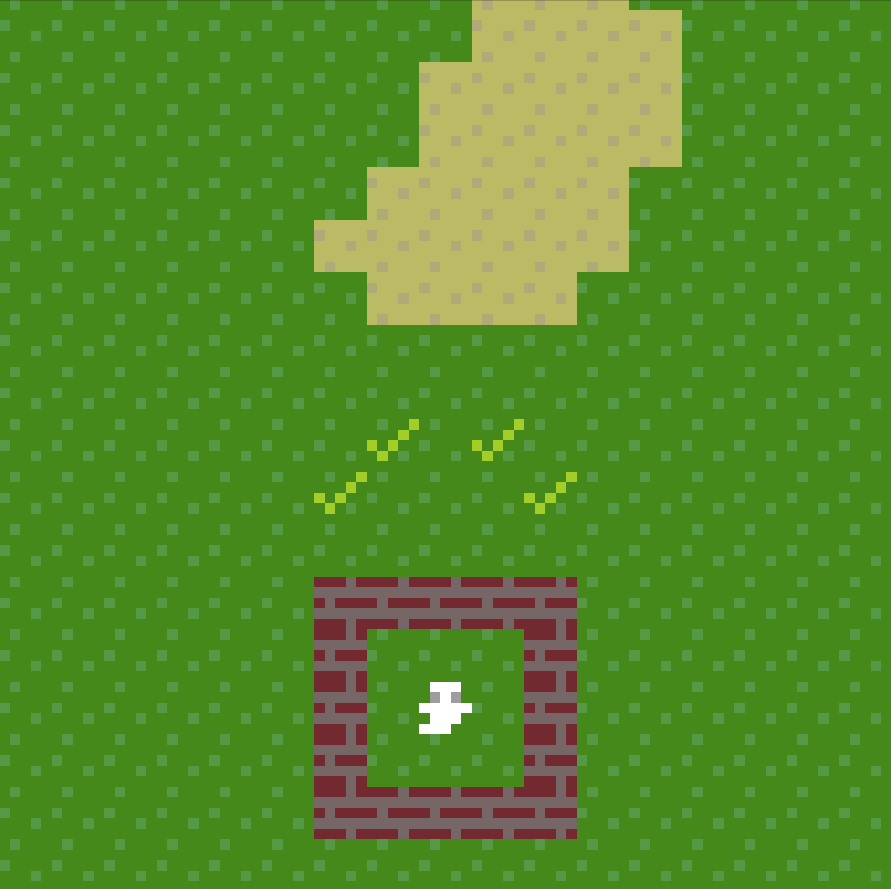

Sokoban: Cursor
2019
link to gameSokoban, but you can freely move anywhere in the grid. It's still just sokoban though, the game keeps track of reachable space and boxes can only be pushed when moving from reachable space.
I was captivated by the idea that you could think of sokoban as about moving the boxes more than about moving the player - and wouldn't it be nice if you could just move anywhere and never got blocked or stuck? This was one of my first experiments in adapting the UX of sokoban while maintaining its ruleset.
Plant Life
2018
link to gameControl the weather and grow flowers to fill the targets in a 2D cross-section of a landscape.
I was interested to make an agent-less puzzle game in puzzlescript, to have no localized player character, and so I made this. :) It's an indirect and strange experience, and I think in some ways it helped me see how much I actually liked the gamefeel of moving a player character around, and how much interest I had in that aspect of game design.
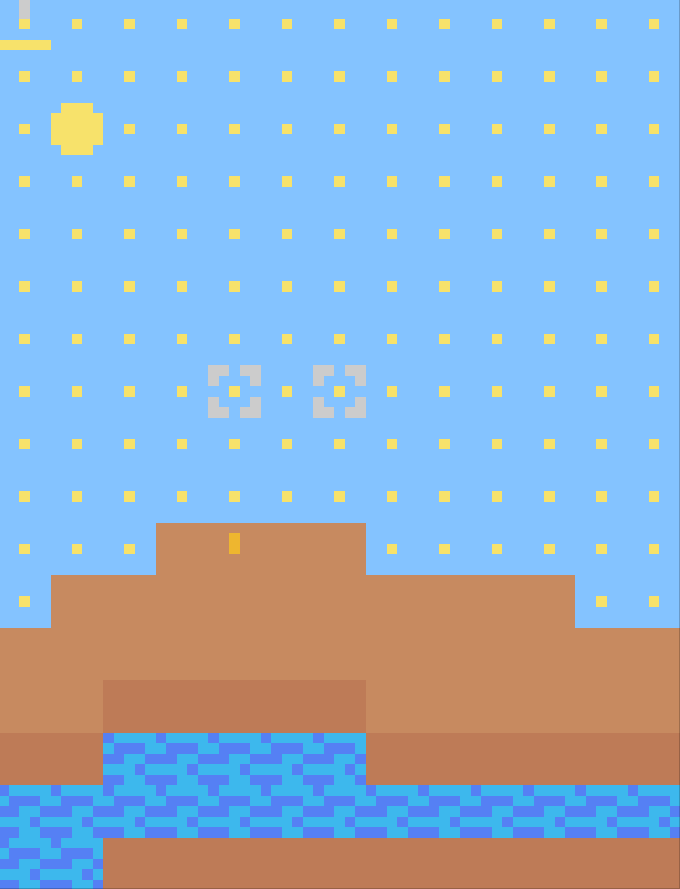
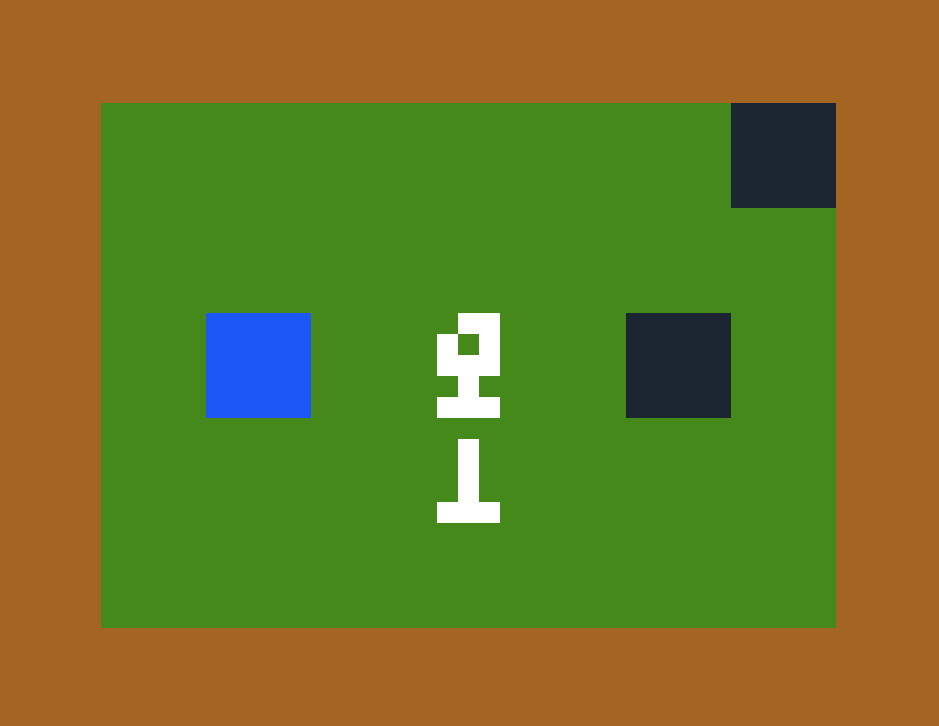
Chess Thing
2018
link to gameAssume the form of the last chess piece you pushed. You are then limited to move like that piece. Cover all targets with chess pieces.
Diagonal movement is a bit awkward, but it was exhilerating to put something together in puzzlescript so quickly after having the idea - I probably only spent a couple hours on this in total.
Bounce Box
2018
link to gameSokoban, but boxes will repel themselves from walls when they can.
I wanted to know how sokoban would work if boxes could never get stuck on walls - what if they just bounced off of them? It became difficult to wrangle the mechanics, though, and I didn't go very far with the experiment. But I am still intrigued by this approach to puzzle mechanic design, of breaking an invariant of classic sokoban and seeing what new ones turn up.
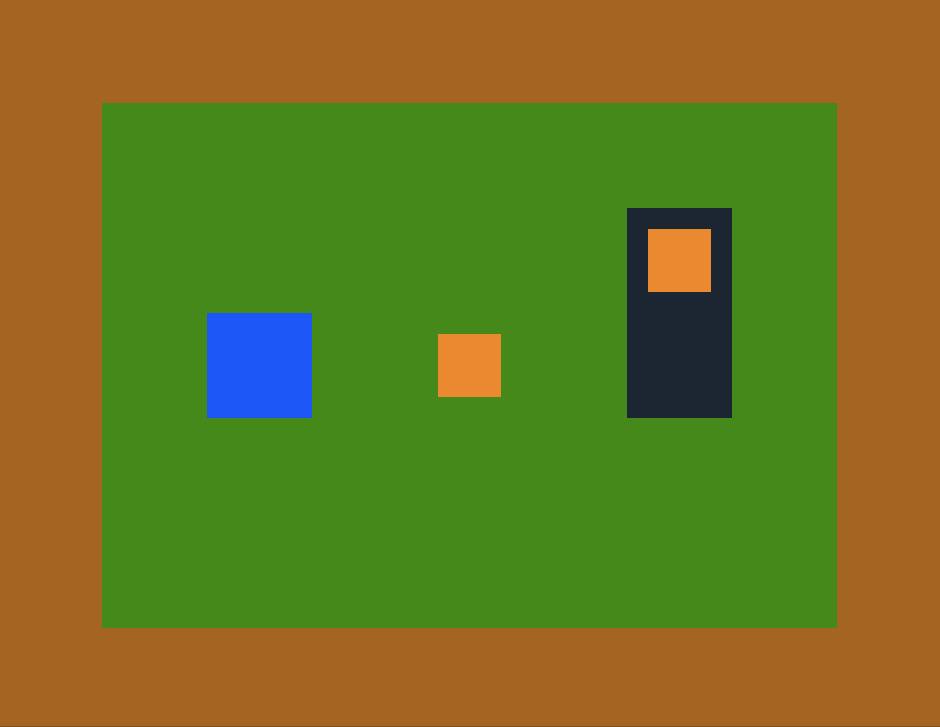
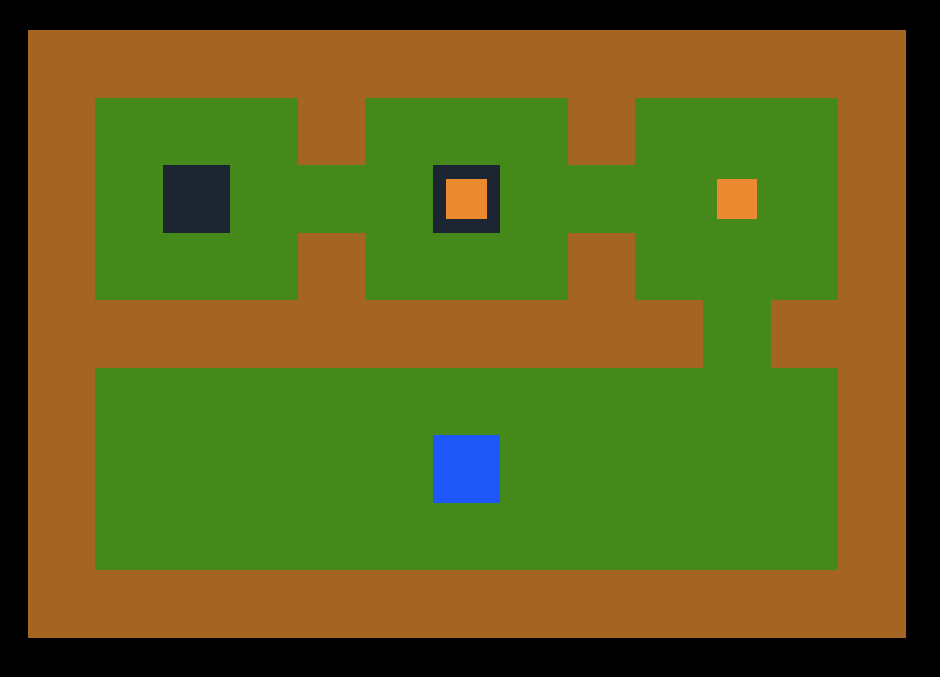
Sokoban Levels
2018
link to gameSome simple sokoban levels.
This was an exercise in level design with plain sokoban. I was skeptical that sokoban could be interesting on its own (at the time), so I wanted to test my understanding of what makes an interesting puzzle - and how do you make them? Studying the basics seemed like a good place to start. Ultimately I think these levels are too clunky and big to be very interesting, but I can see the beginnings of some understanding of how to capture interestingness in a design.